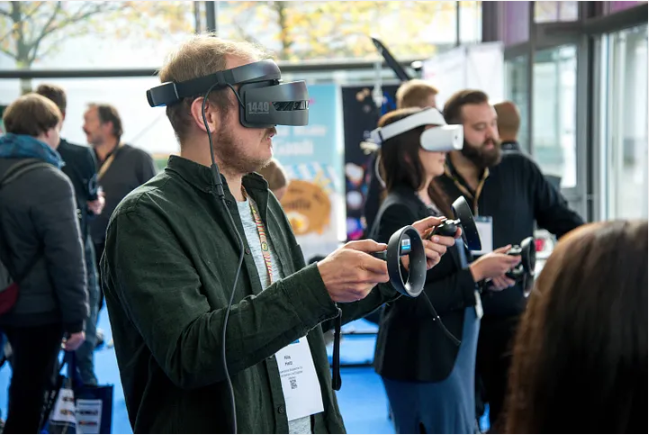The grocery delivery market is booming, with more people preferring to shop online for convenience and safety. Apps like Instacart have set the standard for how to connect customers, stores, and delivery drivers efficiently. If you want to build an app like Instacart, this blog will walk you through key features, estimated costs, and essential steps to launch your own grocery delivery service.
Why Build a Grocery Delivery App?
The demand for grocery delivery apps grows every year. Customers want quick access to fresh groceries without leaving their homes. On the business side, these apps open up new revenue streams by partnering with local supermarkets and individual vendors. A well-designed app can attract users and maintain customer loyalty by offering fast, reliable service.
Core Features of a Grocery Delivery App Like Instacart
To compete with industry leaders, your app needs to include essential features for all users — shoppers, delivery drivers, and store managers.
User App Features
The User App is the heart of the grocery delivery service, designed to offer a smooth and personalized shopping experience. A fundamental feature is:
- User Registration and Profiles
Allow users to sign up quickly using email, phone, or social media accounts. Profiles store delivery addresses, payment methods, and order history. - Product Catalog with Search and Filters
Show groceries in categories such as fruits, vegetables, dairy, and household items. Add filters for price, brand, and dietary preferences. - Real-Time Inventory Updates
Display accurate product availability to prevent ordering items out of stock. - Easy Ordering Process
Make adding items to the cart and checking out smooth and fast. Support multiple payment options like credit cards, digital wallets, and cash on delivery. - Order Tracking
Let users track their order from preparation to delivery in real time. Push notifications keep them updated on order status. - Ratings and Reviews
Users should rate products, delivery experience, and provide feedback to improve the service.
Delivery Driver App Features
A Delivery Driver App should empower drivers with tools that make their job easier and more efficient. One important feature is:
- Driver Registration and Profile Management
Allow drivers to sign up, upload documents, and manage their profiles. - Order Assignment and Navigation
Notify drivers about new delivery requests and provide turn-by-turn directions via GPS. - Status Updates
Drivers update order status such as “picked up,” “on the way,” and “delivered.” - Earnings and Incentives
Track daily earnings and bonuses to motivate drivers.
Store Manager App Features
A Store Manager App is essential for streamlining operations and ensuring smooth coordination with the grocery delivery platform. Here’s a key feature to include:
- Inventory Management
Allow stores to update their product lists, prices, and availability. - Order Management
Stores can accept or reject orders, prepare items, and notify delivery drivers. - Analytics Dashboard
Track sales, popular products, and customer feedback.
How to Build a Grocery Delivery App: Step-by-Step
Creating a grocery delivery app development involves a series of well-planned stages. Follow these steps to develop a functional, user-friendly app that stands out in the market.
Step 1: Research the Market
Analyze your target audience and competitors. Look for gaps in existing apps, like faster delivery times or better product variety.
Step 2: Plan the App Structure
Decide on the number of user roles, key features, and platforms (iOS, Android, Web). Plan the user journey carefully to minimize steps between browsing and checkout.
Step 3: Design the User Interface
Create wireframes and mockups focusing on ease of use and visual appeal. Use clear icons, intuitive navigation, and consistent color schemes that match your brand identity.
Step 4: Develop the App
Choose the technology stack based on your requirements:
- Frontend: React Native or Flutter for cross-platform development
- Backend: Node.js, Python, or Ruby on Rails for server-side logic
- Database: PostgreSQL, MongoDB, or MySQL for storing user and product data
Implement APIs for payment gateways, GPS tracking, and push notifications.
Step 5: Test the App
Conduct thorough testing to fix bugs and improve performance. Use real users for beta testing to gather feedback and adjust accordingly.
Step 6: Launch and Market the App
Release your app on Google Play and Apple App Store. Use digital marketing strategies like social media ads, influencer partnerships, and search engine marketing to attract users.
Estimated Cost to Build a Grocery Delivery App Like Instacart
The cost depends on app complexity, team location, and features. Here’s a rough estimate:
| Feature / Stage | Estimated Hours | Cost (USD) |
| UI/UX Design | 120 | $5,000 – $8,000 |
| Frontend Development | 300 | $15,000 – $25,000 |
| Backend Development | 350 | $18,000 – $30,000 |
| Testing and QA | 100 | $5,000 – $8,000 |
| Project Management | 100 | $6,000 – $10,000 |
| Total | 970 | $49,000 – $81,000 |
Additional costs may include:
- Third-party API subscriptions (maps, payments)
- Cloud hosting and maintenance
- Marketing and user acquisition
Tips to Make Your Grocery Delivery App Successful
Making a grocery delivery app successful requires more than just convenience — it demands efficiency, reliability, and a great user experience. Here’s a key tip to help your app stand out:
- Focus on Speed: Users expect fast deliveries. Invest in optimizing delivery routes and order processing.
- Offer Promotions: Discounts and loyalty programs attract and retain customers.
- Partner with Local Stores: Build relationships with supermarkets to expand product variety.
- Ensure High-Quality Customer Support: Quick resolution of issues builds trust and satisfaction.
- Keep Improving the App: Regularly update features based on user feedback and technology trends.
Final Thoughts
Building a grocery delivery app like Instacart involves careful planning, the right features, and a clear focus on customer needs. By investing in the right technology and user experience, your app can capture a significant share of this growing market. Start small, test thoroughly, and scale your service as demand grows.

